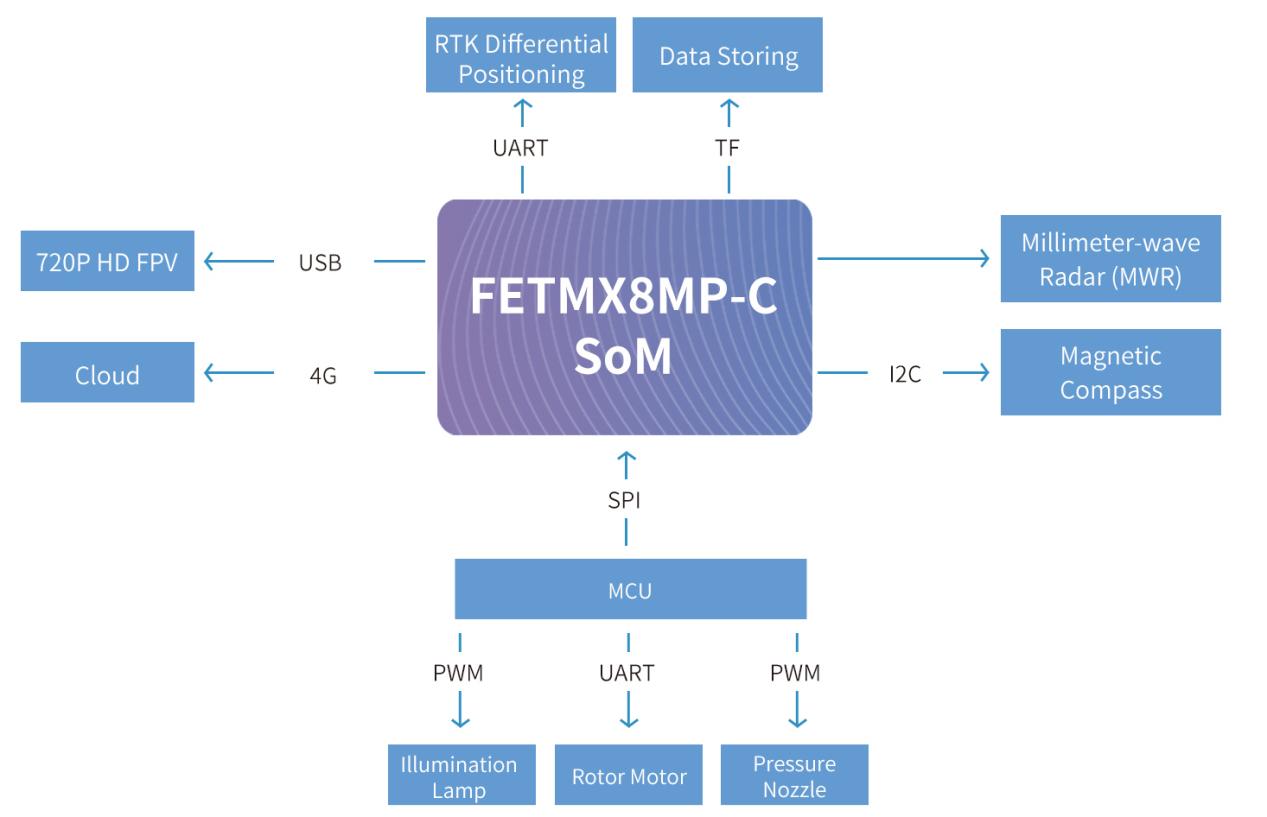Agricultural plant protection UAVs are advanced technologies used in the agricultural field. They utilize unmanned aerial vehicles (UAVs) or remotely controlled aircraft, along with various sensor technologies, to monitor, diagnose, and manage crop health, aiming to improve the efficiency and quality of agricultural production.
Here are some key applications and advantages of agricultural plant protection UAV:
Fertilizer and irrigation management: Plant protection UAVs, equipped with spraying systems, can accurately apply fertilizers and irrigation in the fields. They can manage these processes precisely based on soil and crop requirements, thereby saving resources and improving crop yields.
Crop health monitoring: UAVs can regularly monitor the health of crops in agricultural fields, identifying plant stress, nutrient deficiencies, and water-related issues. By conducting regular surveys, farmers can detect these problems early and take proactive measures to address them. This timely intervention can help optimize crop growth, prevent yield loss, and improve overall agricultural productivity.
Soil analysis: UAVs can be utilized for soil sample collection and analysis, providing valuable data on soil nutrient levels and pH values.
Growth trend analysis: By regularly capturing images of farmland, UAVs can generate a time series of images to help farmers analyze the growth trends and changes in crops.
Precision and accuracy: UAVs equipped with sensors can provide high-resolution data, helping farmers in precision farming practices to reduce waste and resource consumption.
Cost reduction: Automated crop protection processes can reduce labor costs and minimize the use of chemicals and water resources.
Environmental sustainability: By utilizing more precise fertilization and pesticide management techniques, agricultural crop protection UAVs can reduce negative environmental impacts.
Data analysis: The data collected by crop protection UAVs can be integrated with agricultural management software to perform data analysis and decision support. This enables farmers to make more informed decisions based on accurate and real-time information.

Features of the Solution Based on the Forlinx i.MX8M Plus SoM:
(1) i.MX8M Plus integrates a wide range of peripherals, including Ethernet, CAN, SPI, I2C, and more, to meet various external device requirements and facilitate device expansion.
(2) i.MX8M Plus is equipped with high-performance computing capabilities. It features a built-in NPU with up to 2.3 TOPS (Trillions of Operations Per Second) of computing power, allowing for fast processing of complex object recognition algorithms and data. This enables the product to meet the application requirements in various scenarios.
(3) i.MX8M Plus is built with industrial-grade quality, which means it can operate reliably in a wide temperature range from -40°C to +85°C. This makes it suitable for outdoor applications.
(4) i.MX8M Plus adopts a compact design with a thin board-to-board connection. It features a structure size of just 62mm × 36mm, allowing for a smaller overall device footprint. This design approach ensures the integrity of functionality while minimizing the size of the equipment.
Originally published at www.forlinx.net.
Here are some key applications and advantages of agricultural plant protection UAV:
Application Areas:
Pest and disease monitoring and control: UAVs are equipped with various sensors such as multi-spectral cameras and infrared thermal imaging cameras, which can be used to detect pests and diseases on crops and provide real-time information for timely control measures.Fertilizer and irrigation management: Plant protection UAVs, equipped with spraying systems, can accurately apply fertilizers and irrigation in the fields. They can manage these processes precisely based on soil and crop requirements, thereby saving resources and improving crop yields.
Crop health monitoring: UAVs can regularly monitor the health of crops in agricultural fields, identifying plant stress, nutrient deficiencies, and water-related issues. By conducting regular surveys, farmers can detect these problems early and take proactive measures to address them. This timely intervention can help optimize crop growth, prevent yield loss, and improve overall agricultural productivity.
Soil analysis: UAVs can be utilized for soil sample collection and analysis, providing valuable data on soil nutrient levels and pH values.
Growth trend analysis: By regularly capturing images of farmland, UAVs can generate a time series of images to help farmers analyze the growth trends and changes in crops.
The Advantages of Agricultural Crop Protection UAVs are As Follows:
Efficiency and speed: UAVs can efficiently cover large areas of farmland, collecting data in real-time and providing immediate feedback. This enables farmers to quickly take necessary actions based on the data received.Precision and accuracy: UAVs equipped with sensors can provide high-resolution data, helping farmers in precision farming practices to reduce waste and resource consumption.
Cost reduction: Automated crop protection processes can reduce labor costs and minimize the use of chemicals and water resources.
Environmental sustainability: By utilizing more precise fertilization and pesticide management techniques, agricultural crop protection UAVs can reduce negative environmental impacts.
Data analysis: The data collected by crop protection UAVs can be integrated with agricultural management software to perform data analysis and decision support. This enables farmers to make more informed decisions based on accurate and real-time information.
Features of the Solution Based on the Forlinx i.MX8M Plus SoM:
(1) i.MX8M Plus integrates a wide range of peripherals, including Ethernet, CAN, SPI, I2C, and more, to meet various external device requirements and facilitate device expansion.
(2) i.MX8M Plus is equipped with high-performance computing capabilities. It features a built-in NPU with up to 2.3 TOPS (Trillions of Operations Per Second) of computing power, allowing for fast processing of complex object recognition algorithms and data. This enables the product to meet the application requirements in various scenarios.
(3) i.MX8M Plus is built with industrial-grade quality, which means it can operate reliably in a wide temperature range from -40°C to +85°C. This makes it suitable for outdoor applications.
(4) i.MX8M Plus adopts a compact design with a thin board-to-board connection. It features a structure size of just 62mm × 36mm, allowing for a smaller overall device footprint. This design approach ensures the integrity of functionality while minimizing the size of the equipment.
Originally published at www.forlinx.net.